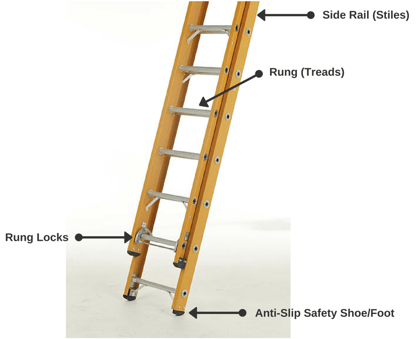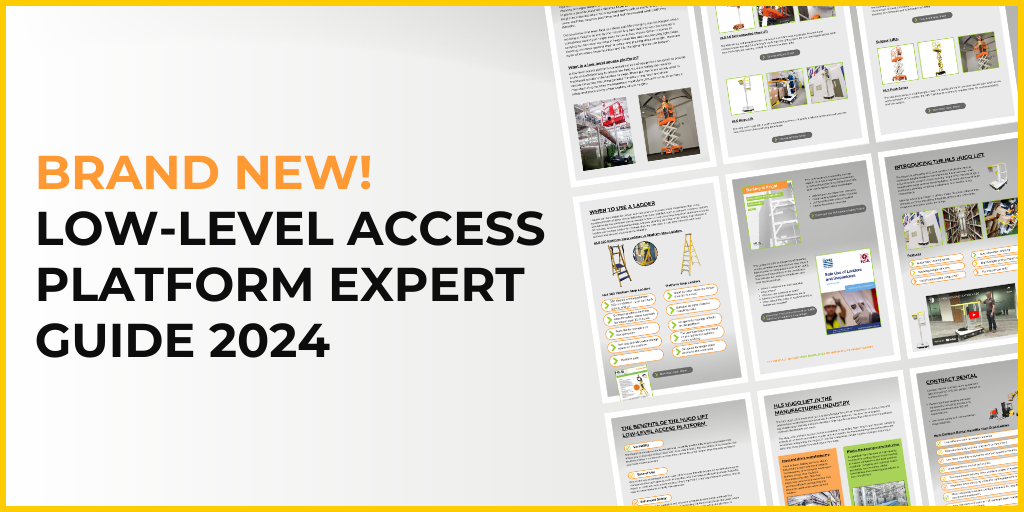There are a lot of prejudices and misconceptions when it comes to the use of ladders for work at height, especially with regards to their safety. While ladders are the cause of nearly 40% of all falls from height, this often has nothing to do with the ladder itself and much more to do with the person who is using it.
For the thousands of years that ladders have been around they have become a widely used and very accessible tool for reaching areas at height. They are used both at home and at work and according to Martin Brooke, Chair of the Ladder Association in the UK, because they are so commonly used ‘everybody thinks that they know how to use a ladder and they don’t and that’s when accidents happen.’
Just like any other piece of equipment, the use of ladders is perfectly safe as long as the user complies with regulations and are properly trained.
In order to minimise falls from ladders the HSE advises that:
- The right type of ladder is used for each job.
- People using ladders are competent and have gone through adequate training and/or are adequately supervised.
- The equipment is used safely and according to a safe system of work.
- Users of ladders are fully aware of the potential risks and any measures in place to help control them.
When is a ladder the most suitable equipment to use?
Just assuming that a ladder is the right tool for accessing height is not enough - completion of a full risk assessment is necessary in order to establish its suitability for the task. If the risk assessment indicates that a ladder is the most appropriate tool for the job due to short duration of use, relatively low risk activity, or because there are existing workplace features which cannot be altered to accommodate alternative forms of access, then the correct ladder should be identified and used by those properly trained to do so. In these circumstances ladders will often present the simplest, quickest, and most cost-effective solution. Ensuring the correct type of ladder is selected will also help ensure jobs are completed in a safe manner.
Choosing the Right Equipment
Because ladders are such a simple and widely available tool the risks they could impose are often overlooked. The very first step to ensuring the safety of operatives is choosing the right ladder for the job. During this process there are a number of things that need to be factored into the decision making process. Some of them include - working conditions such as the weather, the surrounding area, the frequency and duration of the job, as well as potential risks to the safety of other people present in the work area. Considering each of these in turn will help you select the right equipment and minimise the likelihood of falls.
Using ladders safely
The use of ladders, as any other access equipment, should not be underestimated and the person completing the job should be competent and properly trained.
Pre-use checks are essential for all ladder users. They help to identify any obvious visual defects and reassure the user about the safety of the ladder. The pre-use check should be carried out by the user at the beginning of each working day or if a change has occurred, for example in cases when the ladder has been dropped or moved from a dirty to a clean area (check the state or condition of the feet).
The most vital parts to check when using ladders are:
- The stiles – ensure they are not bent or damaged.
- The feet – if they are missing, worn or damaged the ladder could slip.
- The rungs – if they are bent, worn, missing or loose the ladder could fail.
- Any locking mechanisms – if they are bent or the fixings are worn or damaged the ladder could collapse.
- The stepladder platform – if it is split or buckled the ladder could collapse or become unstable.
- The steps or treads on stepladders – if they are dirty they could be slippery and if the fixings are loose on steps, they could collapse.

Precautions to take when working on ladders
Once the pre-use checks are completed there are a number of precautions that should be taken in order to minimise the risk of falls. We will look at the advised measures for two different types of ladders, leaning ladders and step ladders.
Leaning Ladders
When using leaning ladders to work at height, you need to:
- When using leaning ladders to work at height, users should:
- Only carry light materials and tools;
- Ensure they do not overreach;
- Make sure that the ladder is long enough for the task;
- Be careful not to overload it, factoring in the workers weight as well as the weight of the equipment or materials being used;
- Make sure that the ladder angle is at 75° - use the 1 in 4 rule (1 unit out of every 4 units up);
- Always grip and face the ladder rungs while climbing or descending the ladder – no sliding down the stiles!
- Not try to move or extend ladders while standing on the rungs;
- Not work off the top three rungs and make sure that the ladder extends at least 1m above the point at which they are working;
- Not stand ladders on movable objects such as pallets, bricks, forklift trucks, tower scaffolds, excavator buckets, vans, or mobile elevating work platforms;
- Consider using a tool belt to avoid holding items when climbing the ladder;
- Maintain three points of contact when climbing the ladder (this means a hand and two feet) and wherever possible at the work position;
- On the occasions when a handhold can’t be maintained other than for a brief period, ensure other measures are in place to prevent a fall or reduce the consequences if one happened;
- Secure the ladder, eg by tying the ladder to prevent it from slipping either sideways or outwards.
Stepladders
When using stepladders to work at height users should:
- Make sure that all four feet are on the ground before climbing the ladder;
- Only carry light tools and materials;
- Ensure they do not overreach;
- Not stand or work from the top three steps;
- Ensure any locking devices are properly engaged;
- Try to avoid work that imposes side loading, such as side-on drilling through solid materials;
- Maintain three points of contact at the working position;
- (HSE Safe use of ladders and stepladders)
(HSE Safe use of ladders and stepladders)
With thanks to Martin Brooke, Chair of the Ladder Association in the UK for his guidance and knowledge in helping to put this piece together.




